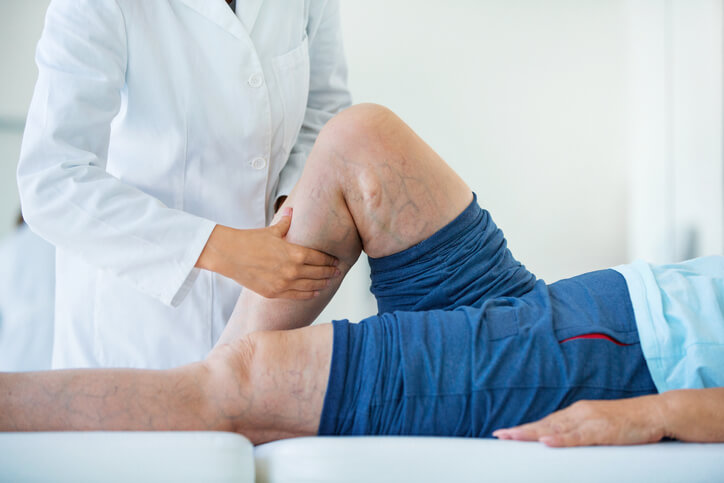Leg Vein Treatments in Canton, GA
Find Long-Term Relief Without SurgeryA Progressive Medical Condition
An estimated 10% of adults suffer from venous disease, also known as chronic venous insufficiency (CVI).1,2 It is a progressive medical condition that worsens over time.
Many factors contribute to CVI, including:
- Family history of CVI
- Age over 50
- Multiple pregnancies
- Obesity
- Long periods of standing or sitting
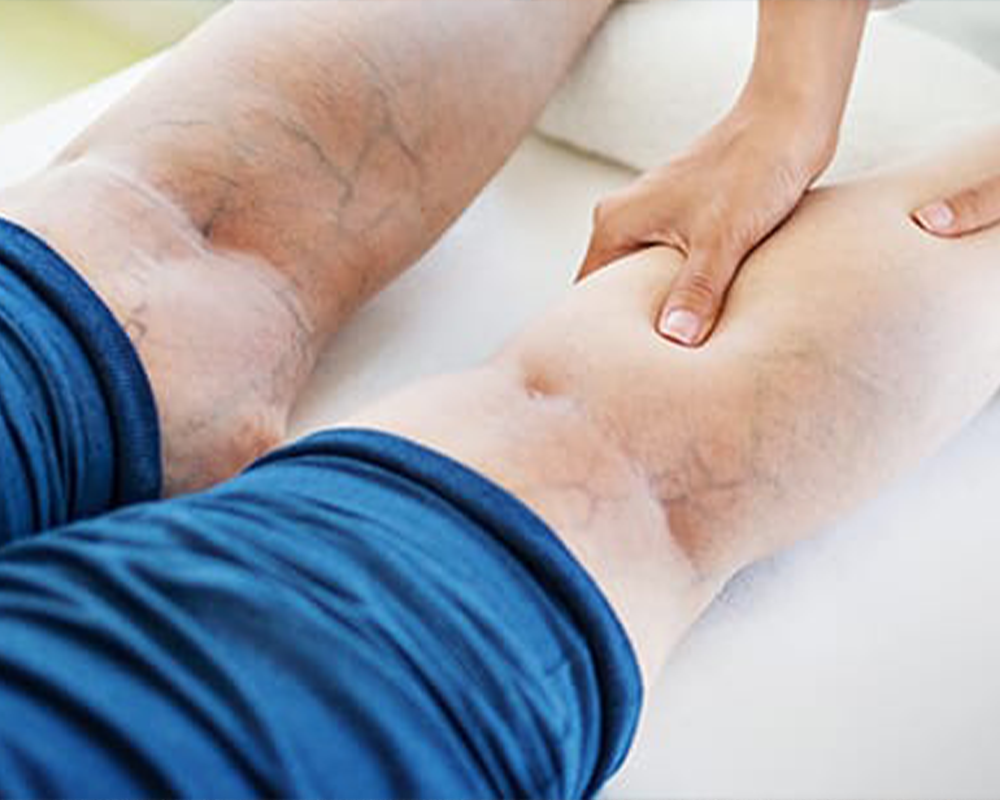
No-Cost Vein Treatment Consultation Request
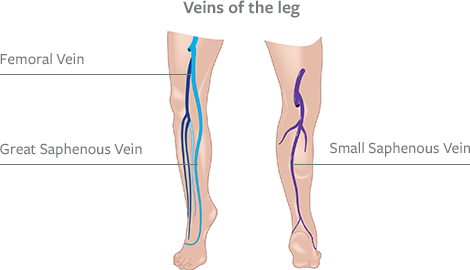
Vein Anatomy
Arteries carry oxygenated blood away from the heart to the tissues and organs. Healthy veins carry deoxygenated blood from the tissues back to the heart and lungs.
Chronic Venous Insufficiency (CVI)
Healthy leg veins contain valves that open and close to assist the return of blood to the heart. Sometimes, the valves become damaged or diseased and can no longer close properly. As a result, blood can leak back through the valve, or reflux, and pool in the lower leg veins. This can lead to chronic venous insufficiency (CVI).
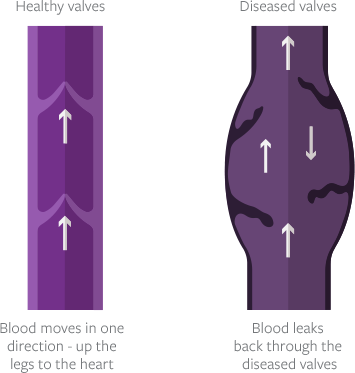

Signs and Symptoms
Signs and symptoms of CVI vary. Some patients may have symptoms but few to no visible signs of CVI.
Common signs and symptoms in the lower legs include:
- Varicose veins or spider veins
- Heaviness, aching, tightness or fatigue
- Discomfort, pain or swelling
- Restlessness or cramping
- Numbness or itching
- Skin texture or color changes
- Ulcer or poor healing wound
Without treatment, signs and symptoms may worsen.
What Causes Varicose Veins?
Certain factors could put you at increased risk for varicose veins, including family history, aging, being overweight or obese, pregnancy or standing for long periods of time as part of your job.
Why varicose veins form
Tiny valves help the leg veins work against gravity to push blood back to the heart.
But if valves weaken, blood can leak backwards and pool, resulting in varicose veins.
Symptoms of Varicose Veins
Varicose veins often look bluish, twisted and enlarged, and bulge above the surface of the skin. But they are not always visible. For some people, they cause pain and discomfort, and cause symptoms, such as:

Venous Leg Ulcers

1 in 4 Americans 65+ will have a venous leg ulcer in their lifetime
About Venous Leg Ulcers
Venous leg ulcers are a symptom of advanced vein disease. Certain factors put you at increased risk for venous leg ulcers, including varicose veins, obesity, standing for long periods of time (usually for work) and having a history of blood clots in your legs.
What Causes Venous Leg Ulcers
Venous leg ulcers are caused by high pressure in the lower leg veins, called venous hypertension. When this pressure continues, it damages the skin, which breaks down and forms an ulcer. This video explains more about venous leg ulcers, why they form and what you can do about them.
Symptoms of Venous Leg Ulcers
Venous leg ulcers can be unsightly and painful wounds that develop around your ankle. They typically look like large, shallow wounds with uneven edges. Other symptoms can include:

Before & After Treatment
See results from Varithena treatment.
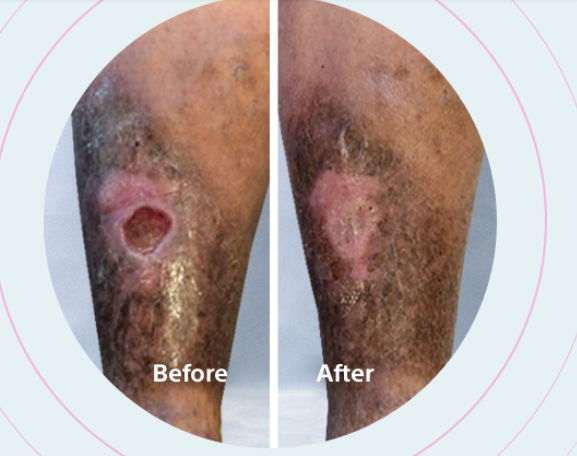
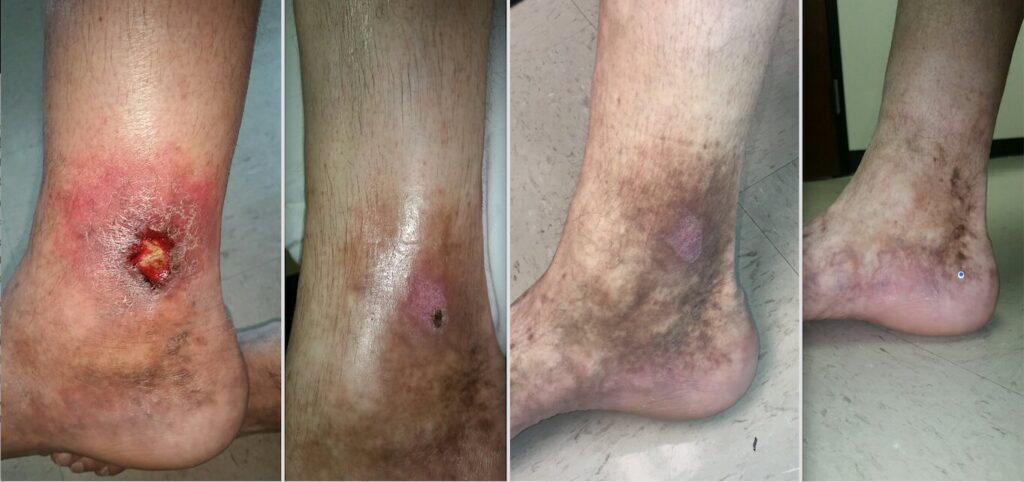
Treat the Veins That Feed the Ulcers
With Varithena, you can treat the symptoms of the underlying cause of certain kinds of advanced venous disease. Treatment focuses on eliminating the diseased veins, and blood flow is redirected through healthier vessels.
Contact Georgia Medical Treatment Center Today
At Georgia Medical Treatment Center, we are dedicated to providing safe and effective treatment options tailored to your unique needs. Our vein treatment program is designed to address issues such as varicose veins and spider veins, helping you achieve healthier, more comfortable legs.
Don’t let vein problems impact your quality of life any longer. Contact us today to schedule a no-risk, FREE consultation appointment with one of our specialists and take the first step towards a healthier, more confident you.
